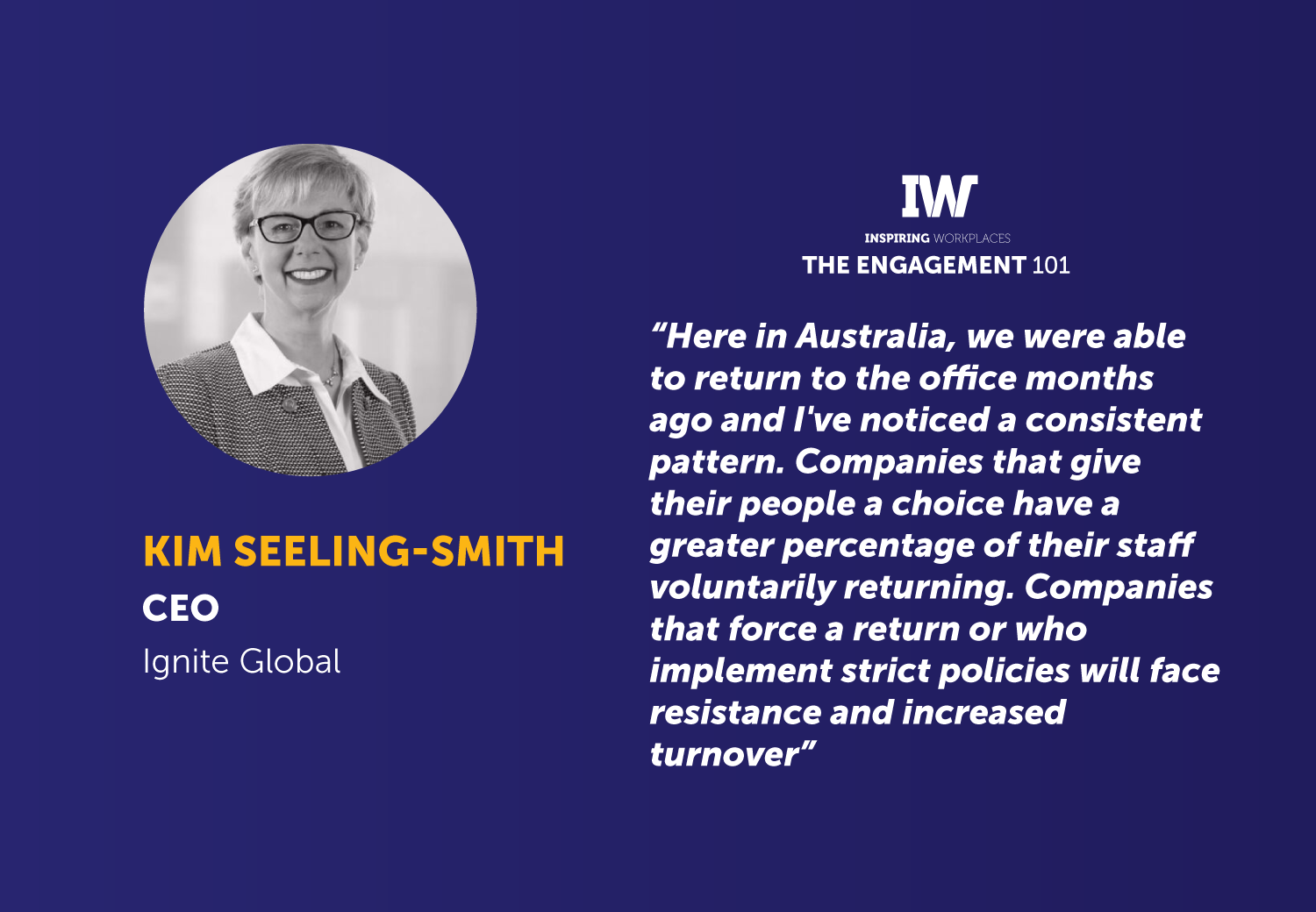
24th May 2021
How to return to the workplace (or not) – in a post covid world – Kim Seeling Smith

This snippet is part of our Ebook How to return to the workplace (or not) – in a post covid world. Advice and suggestions from our Top 101 influencers. You can download the full eBook with all the advice here.
Kim Seeling Smith, CEO, Ignite Global
Very few topics deserve as much individual attention as returning to the office. By that, I mean that companies who try to implement a ‘one size fit’s all approach’ or force an office return will end up losing good people.
The research is consistent and compelling. 72 – 80% of the global workforce would like to continue flexible work arrangements for 3 – 4 days / week. At least. 41% of the global workforce is open to looking at new opportunities in 2021 – especially if their employer does not offer flexible work arrangements.
Here in Australia, we were able to return to the office months ago and I’ve noticed a consistent pattern. Companies that give their people a choice have a greater percentage of their staff voluntarily returning. Companies that force a return or who implement strict policies will face resistance and increased turnover.
Most people want to return to collaborate and to connect. Some want to return because their home is not and never will be set up for remote work. The most successful companies are offering their staff complete freedom to choose, as long as their people are performing to expectation and available for clients or colleagues when needed.
Here are my tips based on both research and anecdotal observation:
- Follow the guidelines to help them feel safe when in the office.
- Do not create a complicated policy. Give them boundaries, specific, measurable objectives to achieve and choice.
- Recognise that different people have different needs based on their role and personal circumstances.
- Give them the opportunity to give you feedback, to tell you what they want.
- Check in with them frequently. Best practice from a global study from Leadership IQ says that 6 hours per week of interaction between manager and direct report increases engagement, innovation and inspiration.
- Recognise that some will need more support than others but don’t try to be a counsellor. Be a manager and a coach, but bring in the experts if one of your team needs more.
Returning to the office will not be returning to normal. The world has changed. We need to honour that and to honour all of the fear, uncertainty, loss and grief that goes with it.
But one of the best ways to move through all of this is to make sure that your team has meaningful work to do and that they recognise the importance of it.

